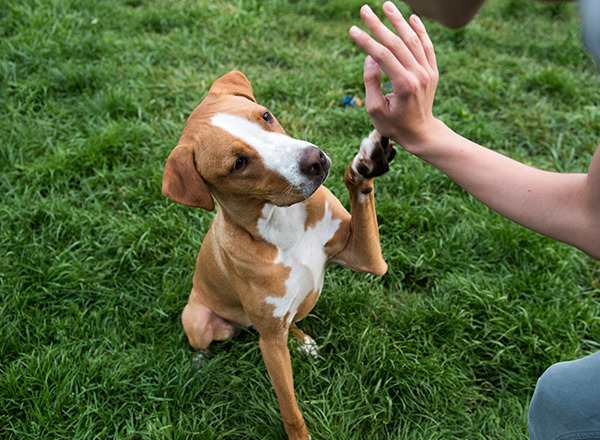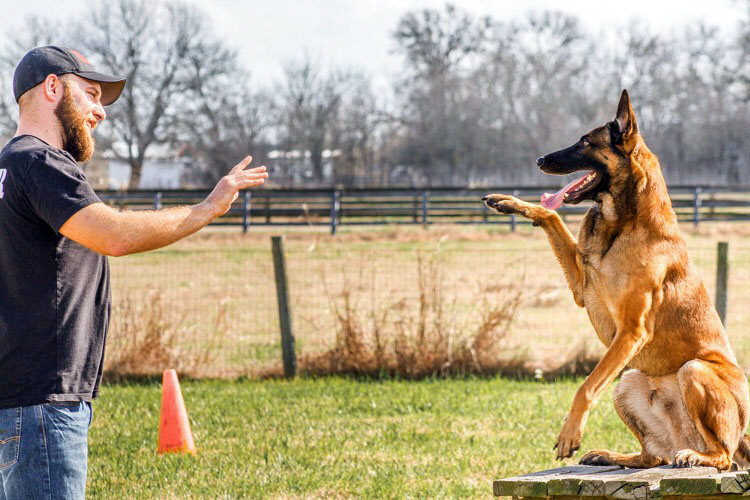Essential Tips for Successful Dog Training: A Guide for Beginners
Leading Canine Educating Strategies Every Proprietor Need To Know

Favorable Reinforcement Methods
Using positive reinforcement methods is important for efficient pet training, as it fosters a relying on bond between the canine and the instructor. This approach concentrates on fulfilling desirable habits as opposed to punishing unwanted ones, producing an environment conducive to discovering. Rewards can consist of deals with, praise, or playtime, which motivate dogs to duplicate the habits that earn them these incentives.

Additionally, this technique improves the pet's enthusiasm for training sessions. When dogs link training with positive experiences, they are much more involved and receptive. Past prompt behavior adjustment, favorable reinforcement motivates a collective connection between the dog and trainer, reducing stress and anxiety and worry
To take full advantage of performance, it is essential to supply incentives immediately, guaranteeing the canine connects the behavior with the reinforcement. Essentially, positive support methods not only yield better-trained pets however also promote a harmonious partnership between canine and owner.
Clicker Training Method
The clicker training method is an extremely reliable technique that builds on the concepts of positive support by including a distinctive noise to mark desired actions. This technique makes use of a small portable device that generates a clicking audio, permitting trainers to interact with their dogs in a clear and prompt way. When a pet dog executes a behavior that the proprietor desires to encourage, the remote control is triggered, complied with by a reward, typically in the kind of treats or appreciation.
The key to effective remote control training lies in consistency and timing. It is critical to click at the precise minute the wanted actions takes place, making sure that the dog connects the noise with the activity and the subsequent incentive. This method not only enhances communication but also promotes a stronger bond in between the dog and the proprietor, as it encourages interaction and communication throughout training sessions.
Clicker training can be used to a range of habits and commands, from basic obedience to more complex tricks. Its convenience and efficiency make it a favored method amongst professional trainers and pet dog proprietors alike, leading the way for a responsive and trained canine buddy.
Leash Training Fundamentals
Reliable chain training is necessary for making sure a pleasurable and risk-free walking experience for both canines and their owners. A level collar might work for some canines, while others might profit from a harness that lowers drawing.
Introduce your dog to the leash gradually, allowing them to explore it in a comfortable environment. This entails rewarding your dog for walking beside you instead than drawing in advance.
If your pet starts to draw, stop strolling instantly. Additionally, technique various walking settings to aid your dog adapt to distractions.
Normal method will certainly strengthen your pet dog's understanding of chain rules. Keep in mind that chain training is an ongoing process; patience and uniformity will certainly yield the best outcomes, fostering a favorable experience for both you and your canine friend.
Socializing Techniques
Socializing is an essential aspect of canine training that need to ideally begin throughout puppyhood however can be valuable at any age. Reliable socializing assists dogs develop self-confidence and lowers the probability of click here for info behavior problems. To implement successful socializing strategies, subject your dog to a range of environments, people, and other animals.
Beginning with controlled settings, such as young puppy classes or arranged playgroups, where young pets can communicate securely. Progressively introduce your pet to new experiences, consisting of various noises, surfaces, and activities. Ensure these encounters are favorable and rewarding to establish a sense of safety and security.
For grown-up pet dogs or those doing not have exposure, begin with low-stress scenarios. Short, favorable interactions with calm pets and friendly people can produce favorable organizations. Make use of treats and praise to enhance desirable actions throughout these experiences.

Uniformity and Persistence
Acknowledging the importance of uniformity and patience in canine training is important for attaining long lasting outcomes. Inconsistent training can lead to complication, making it difficult for the pet dog to comprehend behaviors or commands, eventually preventing progress.
Pets, like people, find out at their own speed. This promotes a trusting connection between the pet and proprietor, motivating a much more ready and passionate student.
To grow uniformity and persistence, develop a regular training routine, utilize the exact same commands, and guarantee that all relative use the same training principles - Dog training. By doing so, you produce a secure atmosphere conducive to finding out, enabling your pet to establish and thrive right into a well-behaved friend
Final Thought
In final thought, reliable dog training methods, such as favorable support, clicker training, and correct leash training, are essential for promoting a healthy and balanced owner-dog partnership. Additionally, carrying out socialization methods and keeping consistency and perseverance throughout the training process adds dramatically to a pet dog's overall health. By integrating these methods, pet dog proprietors can help with the advancement of my review here well-adjusted, loyal pet dogs, inevitably improving the top quality of life for both the dog and the owner.
Amongst the most famous methods are positive support, remote control training, and leash training, each offering distinct advantages that contribute to a well-behaved dog. As we discover these basic strategies, it ends up being apparent that mastering their nuances can significantly influence the training experience and the dog's total habits.Utilizing favorable reinforcement methods is important for anchor efficient dog training, as it cultivates a trusting bond in between the pet dog and the instructor.In conclusion, effective pet dog training strategies, such as positive reinforcement, clicker training, and appropriate leash training, are crucial for fostering a healthy owner-dog connection. By incorporating these approaches, pet proprietors can facilitate the development of well-adjusted, obedient animals, eventually boosting the top quality of life for both the owner and the pet dog.